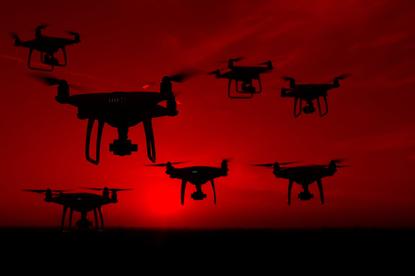NBN Co, auto industry concerned over police push for drone-jamming tech
- 09 May, 2019 11:57

A proposal to exempt the Australian Federal Police from rules banning the use of certain types of drone-jamming technology has raised concerns about the potential impact on other wireless technologies, including the emerging category of intelligent transport systems.
The Australian Federal Police (AFP) has previously received a temporary exemption from rules governing wireless spectrum use in order to employ drone-jamming devices during the 2018 Invictus Games in Sydney. However, the AFP is interested in ongoing authorisation to use drone-jamming.
The AFP last month told Computerworld that it was interested in potentially employing the technology in “variety of operational circumstances” including “the protection of major events or places of mass gathering, programmed police operations, or in response to an incident”.
The relevant regulator, the Australian Communications and Media Authority (ACMA), has proposed a two-year exemption for the AFP that would allow the agency to employ drone-jamming. There exemption would be limited to targeting drone control systems that employ the 2.4GHz (2400-2483MHz) or 5.8GHz (5725-5850MHz) bands.
However, groups representing the automobile and intelligent transport technology sectors have raised concerns about the possible effect on systems that use the adjacent 5.9GHz band. The 5.8GHz band is also used by toll-road operators.
The Federal Chamber of Automotive Industries (FCAI), carmaker Ford, and ITS Australia have told the ACMA they are worried that AFP drone-jamming measures could disrupt vehicle-to-vehicle (V2V) vehicle-to-infrastructure (V2I), and V2X (vehicle to everything) communications, which are a key component of cooperative intelligent transport systems (C-ITS).
The FCAI and ITS Australia have proposed that any testing, training and maintenance of AFP drone-jamming technology takes place in an area that is unlikely to impact on traffic. The FCAI has also told the ACMA that the AFP should assess any jamming technology it purchases to see whether it could potentially disrupt C-ITS safety systems.
NBN Co is also concerned about the operation of drone-jamming devices — in particular, any potential impact on the 2.3GHz band, which it uses to deliver its fixed wireless service. It has called for the ACMA to impose restrictions on the drone-jamming systems that would enforce particular power thresholds within the target spectrum band, and standards for spurious emission thresholds outside that permitted spectrum range.
Optus has indicated that it is concerned over the potential for scope creep, with other agencies seeking a similar exemption to use drone jamming. The telco also believes that the proposed exemption may only be effective for the initial consumer-grade drones currently available, and that drone jamming may see operators start to employ GPS bands or mobile spectrum to control devices.
Telstra has told the ACMA that in addition to concerns about C-ITS — Telstra has helped stage V2X trials — a whole-of-government approach to dealing with rogue drone operators is desirable. A Senate inquiry recommended such an approach.
The telco also believes that technical details of the devices that will be used by the AFP are necessary to understand the potential impact on users of spectrum adjacent to 2.4GHz and 5.8GHz bands. Like Optus, it is worried that drone operators could shift to other frequency ranges.
